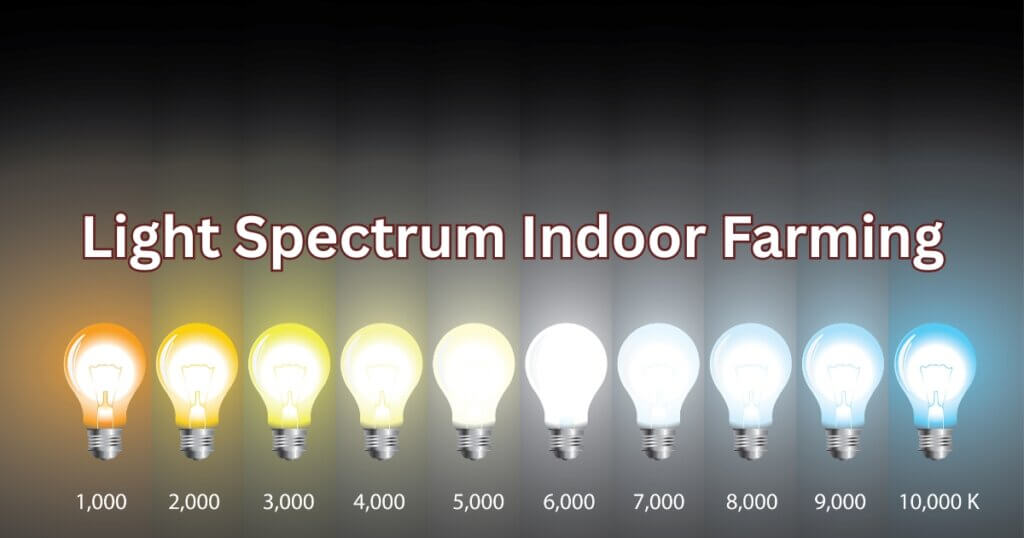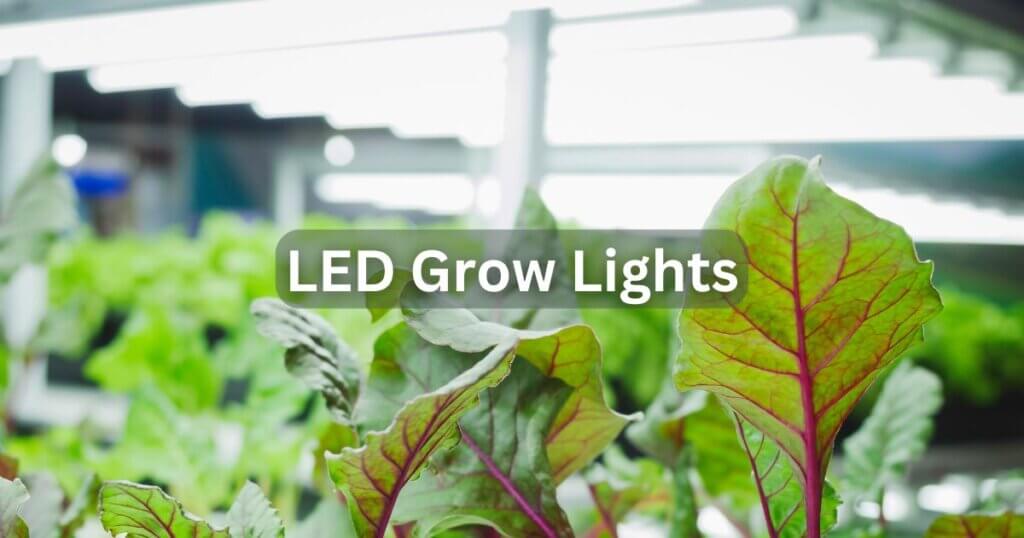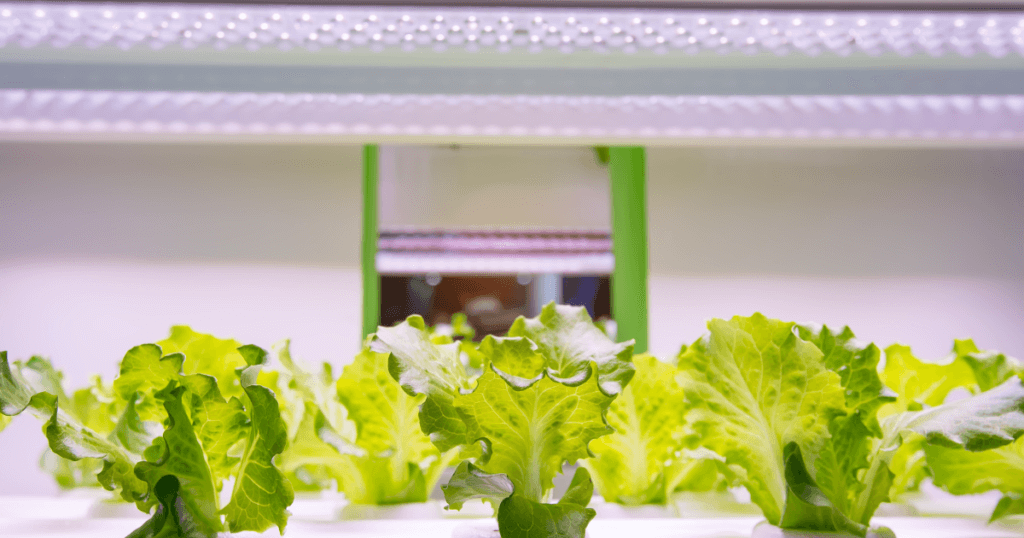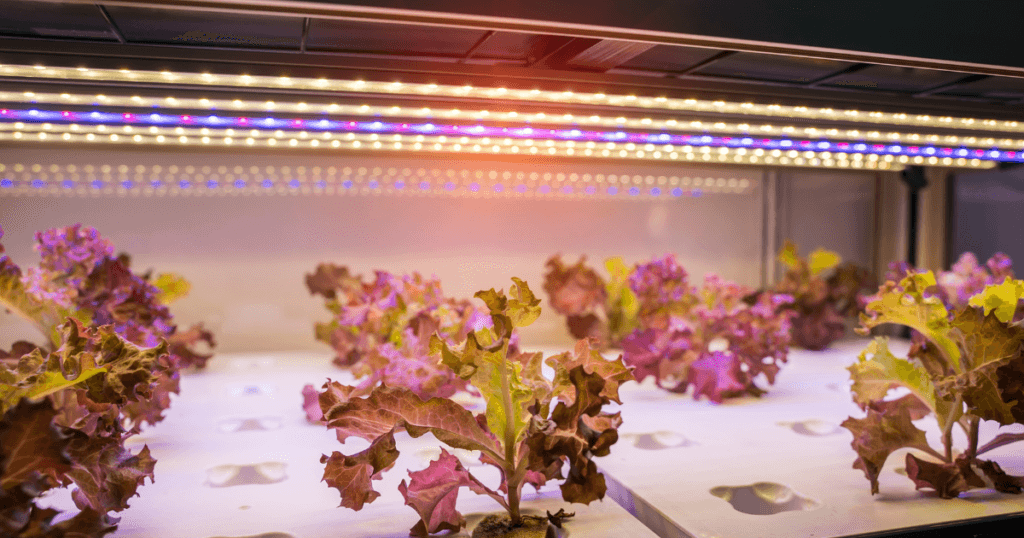Light Spectrum Indoor Farming: The Shocking Truth About What You’re Missing

Some of the links in this post are affiliate links. As an Amazon Associate, we earn a referral fee from qualifying purchases—at no extra cost to you.
Indoor farming is booming, but there’s a powerful secret that separates thriving grow rooms from struggling setups: light spectrum. That’s right—when it comes to light spectrum indoor farming, understanding which colors of light your plants crave can make or break your yield. If you’ve ever wondered why your lettuce is leggy or your tomatoes aren’t fruiting, this might be the missing link.
Let’s unravel the truth about light spectrum and how mastering it can transform your indoor farming game.
Table of Contents
Why Light Spectrum Matters in Indoor Farming
Light spectrum indoor farming is the science of using specific wavelengths of light to optimize plant growth indoors. It matters because not all light is created equal—plants need targeted wavelengths, especially red and blue, to thrive. One major benefit is the ability to control plant development year-round, leading to faster growth and higher yields. If you’re only using generic lights, you could be missing out on the full potential of your indoor garden.
Understanding the Full Light Spectrum for Indoor Agriculture
Blue Light – Encouraging Leafy Growth
In light spectrum indoor farming, blue light (400–500 nm) is vital during the vegetative stage of plant development. It encourages dense, leafy growth and helps seedlings build strong, compact structures. This is especially useful for crops like lettuce, kale, and herbs, which rely heavily on foliage. If you’re struggling with weak or leggy seedlings, enhancing blue light in your setup could be a simple and effective fix.
Red Light – Triggering Flowering and Fruiting
Red light (600–700 nm) is a powerhouse when it comes to flowering and fruiting. It signals plants to enter reproductive stages, helping them produce buds, blooms, and fruits more efficiently. The key benefit here is higher yields in flowering crops like tomatoes, strawberries, and peppers when red light is optimized. If your plants are leafy but not producing, they’re likely missing the red light cues needed to complete their life cycle.
Green Light – Not Useless, Just Underestimated
While green light was once overlooked, recent research shows it plays an important supporting role in plant health. It penetrates deeper into the canopy than red or blue light, reaching lower leaves that still perform photosynthesis. This means better overall light distribution and energy use throughout the plant. If you want a more balanced, robust plant structure, don’t discount the value of including green in your lighting mix.
Far-Red and UV Light – The Secret Growth Boosters
Far-red and UV light might not be the first spectrums you think of, but they offer powerful hidden benefits in light spectrum indoor farming. Far-red promotes elongation and height growth, useful for plants in competitive or shaded environments, while UV light enhances flavor, color, and antioxidant production in herbs and leafy greens. These wavelengths help fine-tune plant performance beyond basic growth. If you’re aiming for premium quality crops or specialty plants, adding these spectrums can give you a competitive edge.
The Best Light Spectrum Combinations for Indoor Crops
Ideal Spectrum for Leafy Greens (e.g., Lettuce, Kale)
Light spectrum indoor farming reveals that leafy greens like lettuce and kale thrive under a light mix rich in blue wavelengths. This matters because blue light encourages compact, sturdy growth and boosts the nutritional profile of leafy vegetables. A 60% blue to 40% red ratio helps produce greens that are not only flavorful but also packed with nutrients. If you want crisp, nutrient-dense greens straight from your indoor garden, adjusting your spectrum could make all the difference.
Best Light Blend for Fruiting Crops (e.g., Tomatoes, Peppers)
Fruiting crops like tomatoes and peppers require more red light, especially as they mature and begin to flower. This matters because red light stimulates flowering and fruit development, while adding far-red light can further enhance ripening and yield. A ratio of 30% blue to 70% red is ideal for pushing these crops into productive growth. If your fruiting plants look healthy but aren’t producing, tweaking your spectrum could unlock the harvest you’re missing.
Custom Spectrums for Microgreens and Herbs
Microgreens and herbs have unique light preferences that differ from standard crops. Microgreens benefit from full-spectrum lighting with a strong blue emphasis, which boosts their nutrient content, while herbs like basil and mint thrive under blue-dominant spectrums for robust aroma and lush growth. This tailored approach ensures both higher quality and better flavor in your harvest. If you’re growing specialty greens or culinary herbs, the right light recipe can take your results from average to gourmet.
Grow Light Types and Their Spectrum Capabilities
LED Grow Lights – Full-Spectrum Champions
- Offer customizable spectrum settings
- Energy-efficient, low-heat
- Ideal for hobbyists and commercial growers alike
Fluorescent and CFL Lights – Budget-Friendly But Limited
- Emit mostly blue light
- Suitable for seedlings and leafy greens
- Not powerful or diverse enough for fruiting crops
HID and HPS Lights – Powerful, But Spectrum-Restricted
- Emit intense red/orange light
- Excellent for flowering but lack blue for vegetative growth
- High heat output, often needing cooling systems
How to Choose the Right Light Spectrum Setup
Matching Spectrum to Plant Growth Stages
| Plant Stage | Spectrum Needed |
|---|---|
| Seedlings | High blue (450 nm) |
| Vegetative Stage | Balanced, slightly blue-heavy |
| Flowering/Fruiting | Red-dominant with far-red |
Adjustable Spectrum LED Panels – Are They Worth It?
Yes! They allow:
- Switching between veg and bloom modes
- Fine-tuning spectrum for specific crops
- Long-term energy savings
Experience full-spectrum lighting tailored for every growth stage with the Spider Farmer SF1000 Full-Spectrum LED Grow Light — ideal for hobbyists and advanced growers alike.
Spectrum Optimization vs. Energy Efficiency
- More spectrum = more control, but possibly more power
- Smart systems optimize spectrum without wasting electricity
- The goal: deliver only what plants need, when they need it
Real-World Case Studies in Light Spectrum Indoor Farming
A Small-Scale Lettuce Grower’s Success Story
Lena, a micro-farmer in Chicago, upgraded from fluorescents to custom-spectrum LEDs:
- Spectrum: 60% blue, 30% red, 10% green
- Yield increased by 35%
- Customers noticed better taste and texture
Urban Farm Using Custom LED Arrays for Maximum Yields
A Tokyo vertical farm stacked crops 10 layers high with AI-controlled full-spectrum LEDs:
- Adjust spectrum dynamically based on plant data
- Mimic natural daylight cycles
- Achieved 12 basil harvests per year using 30% less energy
Tips for Monitoring and Adjusting Light Spectrum
Tools to Measure PAR and Spectrum Output
- PAR meters: Measure usable plant light (μmol/m²/s)
- Spectrometers: Analyze the specific wavelengths your grow lights emit
These tools ensure your light setup meets plant needs at every stage.
Dial in your lighting right with the Quantum PAR Meter, a handheld tool that measures PPFD so you can fine-tune height and spectrum for peak plant performance.
Troubleshooting Light-Related Plant Issues
| Problem | Likely Cause |
|---|---|
| Leggy growth | Not enough blue light |
| Poor flowering | Insufficient red light |
| Burnt leaves | Too much intensity or UV |
| Yellowing bottom leaves | Inadequate green/far-red |
The Future of Light Spectrum Technology in Indoor Farming
AI-Powered Smart Lighting Systems
- Use sensors and AI to automatically adjust spectrum and intensity
- Analyze plant needs based on real-time feedback
- Prevent stress and optimize yields automatically
Spectrum Tuning Based on Plant Feedback
- Plants emit subtle signals (e.g., fluorescence, color shifts)
- Future lighting tech will interpret and react to those signals
- Plants will, in essence, “tell” lights what they need
Conclusion
If you’re serious about indoor farming, understanding the light spectrum is essential—it’s the hidden factor that directly impacts how well your plants grow. This matters because different wavelengths of light affect plant growth stages in unique ways, from leafy development to flowering and fruiting. By mastering the right light spectrum, you can boost yields, improve crop quality, and grow healthier plants all year round. If you want to maximize your indoor farm’s productivity, harnessing the power of light spectrum is the game-changer you’ve been missing.
Don’t settle for generic lighting. Learn your spectrum, and your plants will thank you—with explosive growth.
FAQs – Light Spectrum Indoor Farming
1. Can I mix different types of grow lights to achieve a full spectrum?
Yes, combining different light types like LED, HPS, and CFL can help achieve a more complete light spectrum. For example, adding a red-rich HPS to a blue-heavy CFL setup can balance growth and flowering. Just be mindful of heat and overlapping intensity to avoid stressing your plants.
2. How does light spectrum affect plant flavor and nutrition?
Light spectrum directly impacts the production of phytochemicals in plants. Blue and UV light can increase antioxidants, essential oils, and flavor compounds. This means carefully tuned spectrums don’t just grow more food—they grow better-tasting, more nutritious food.
3. Do different plant varieties within the same species require different light spectrums?
Yes, even within the same crop type, different cultivars can respond differently to light. Some lettuce varieties, for instance, thrive with more blue, while others bulk up better with a bit more red. Fine-tuning for specific genetics can unlock better results.
4. How long should each spectrum be used daily?
The length and type of light exposure should match your plant’s stage. During vegetative growth, 16–18 hours of blue-dominant light is ideal. For flowering, 12–14 hours of red-rich light works best. Smart lighting systems can automate spectrum shifts throughout the day to simulate natural sunlight changes.
5. Is investing in full-spectrum LED lights cost-effective in the long run?
Yes, while the initial price is higher, full-spectrum LEDs save money over time through energy efficiency, low heat output, and long lifespan. They also provide better growth control, which leads to faster harvests and higher yields—making them a smart long-term investment.
Other Useful Resources Related to the Light Spectrum Indoor Farming
What is PAR for plant lighting? Photosynthetically Active Radiation
This article explains the concept of Photosynthetically Active Radiation (PAR) and how it impacts plant photosynthesis and growth in controlled environments.
Green light is similarly effective in promoting plant biomass as red light
Recent studies show that green light contributes significantly to plant growth by penetrating deeper into the canopy and boosting overall biomass.
Far Red Light is Good For Plant Growth
Explore how far-red light influences plant morphology, increases elongation, and enhances flowering responses in indoor crops.
Adjustable Spectrum LED Grow Lights
Learn about LED grow lights with adjustable spectrums that allow growers to fine-tune lighting based on crop type and growth stage.
Smart lighting might make vertical farming more affordable
Discover how AI-powered smart lighting systems are revolutionizing vertical farming by optimizing energy use and boosting yields.





